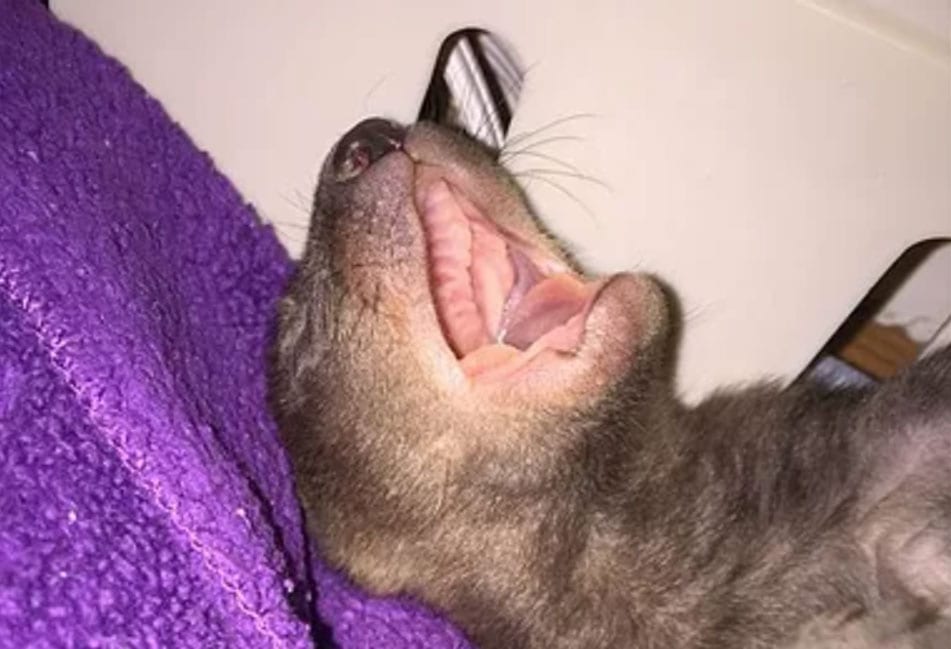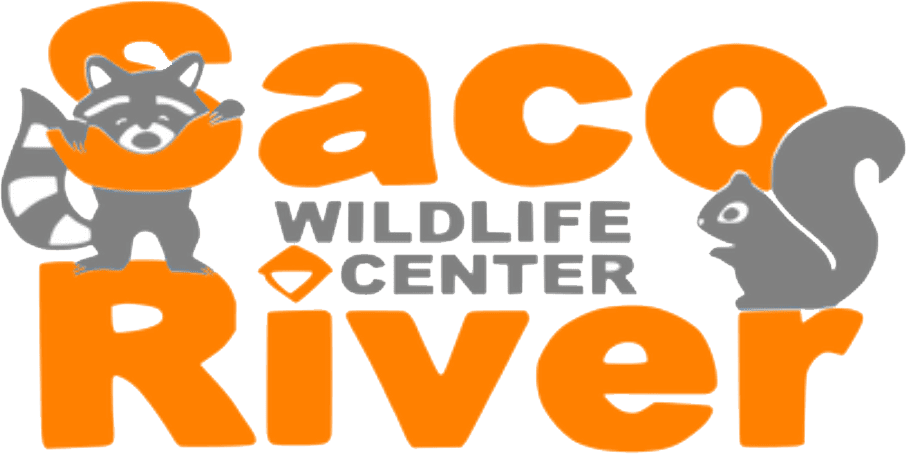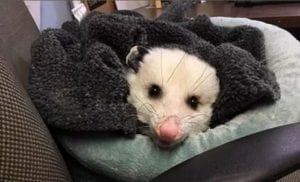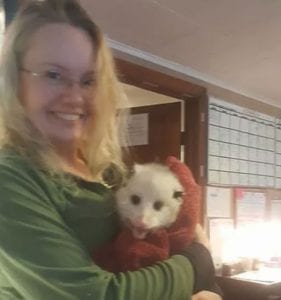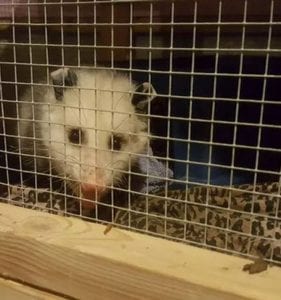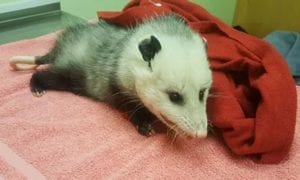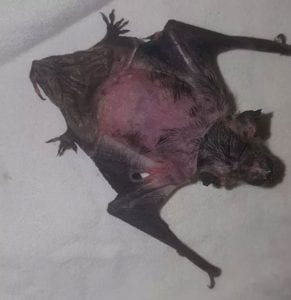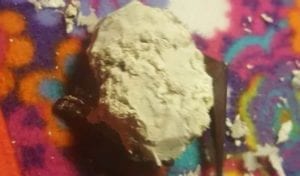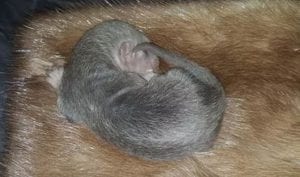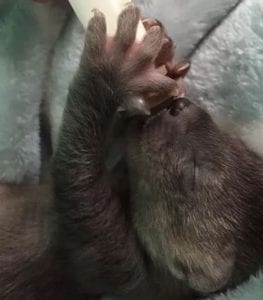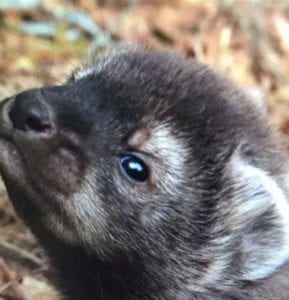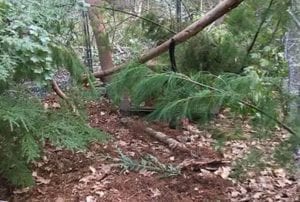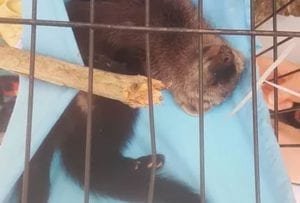
Success Stories
Sometimes we get patients that, despite the odds, bounce back from serious and debilitating situations. Scroll through the slideshows below to read about some of the plucky animals who proved to us just how resilient wildlife can be.
WILBUR
Wilbur came to the Saco River Wildlife Center in November of 2016 as a baby who had been hit by a car. He was covered in wounds, maggots, fly eggs, and fleas. His prognosis was very guarded; small animals rarely win against automobiles.
Wilbur also had a clubbed foot, and we wondered if he could ever be released at all.
Wilbur did indeed recover, and his sweet demeanor made everyone who met him fall in love. Bethany could not keep him, however, and his clubbed foot did in fact impede a wild release.
In December of 2016, the Center for Wildlife agreed to take Wilbur on as one of their non-releasable ambassadors.
Wilbur enjoyed visiting WMUR Channel 13 for Good Day Maine, was the star for a talk at Thomas Memorial Library in Cape Elizabeth as part of their Wildlife Series, and was the muse for a class at Maine College of Art. He also visited countless schools, libraries, nursing homes, and universities, meeting groups of people of all ages from infant to elderly.
Wilbur passed away in January of 2018. Opossums live on average two years in captivity, and Wilbur was no exception. What was exceptional was how many hearts this little boy touched in his short time with us.
Thank you, Wilbur, for being our teacher.

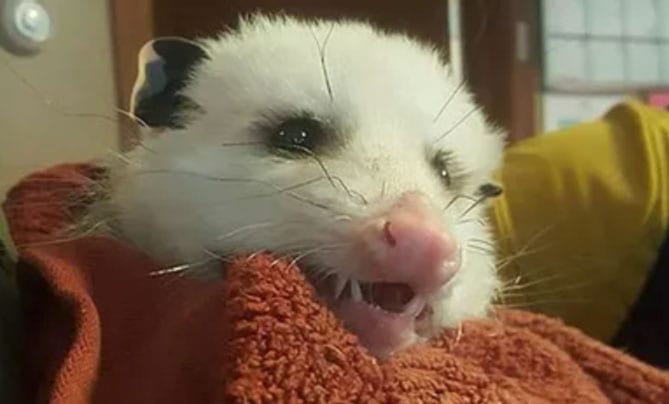
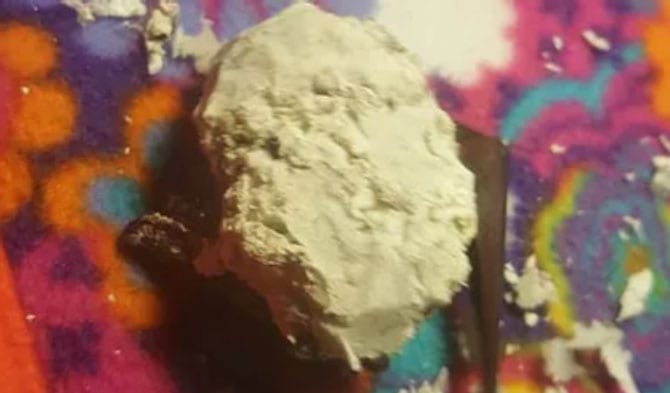
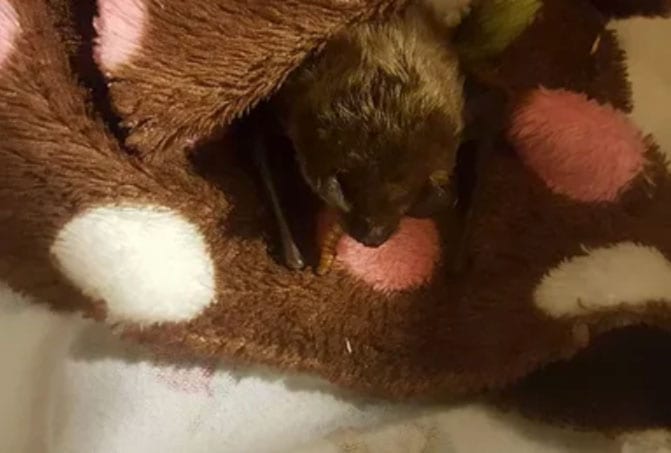
“FOAM BAT”
In late 2017, Bethany got a phone call from a gentleman with a concerning dilemma: he had, on accident, sprayed a bat with foam insulation while working on his house. He realized his mistake almost immediately, but the foam was quick-drying. Rather than deciding the bat was a lost cause, he cut it free and gave SRWC a call.
It took 18-20 hours over the course of three days to free him, and by the time Bethany was done, he was almost entirely hairless. But she learned something valuable along the way: applying warm coconut oil softened the foam and made it incredibly easy to remove.
Foam Bat, as we had come to call him, recovered very well. Although a hole in his wing prevented stable flight, his fur grew back in and he was transferred to a ME bat rehabber with a permanent flight facility, where he now lives with an adoptive colony of bats!
CARRIE
In early summer of 2018, SRWC received a rare “mystery baby;” we had no idea what species she was, although we had some ideas. We knew she was a mustelid (weasel family), and volunteers and supporters alike thought she might be a baby river otter. She’d been found on the ground in an area undergoing logging, suggesting that she’d been dropped as mom left the area.
As she got bigger, her fur darkened to a rich mahogany brown. Her eyes opened, her teeth came in, and one of our licensed volunteers took her home to be her foster mom, in order to limit her exposure to humans and keep her from getting too friendly with us. When her face markings came in, we officially knew what kind of animal she was.
In the immortal words of Tom Petty, Carrie “grew up tall, and she grew up right.” She came back to SRWC and moved into an outdoor enclosure, and we enjoyed watching her over the rest of the summer. We placed a game camera outside of her enclosure to see what she did at night- which turned out to be a lot of “play with my dangly rope.”
Carrie was released in August. She was showing the appropriate aversion to humans and was exhibiting more and more interest in the world outside of her enclosure. She also had the hunting and problem skills we like to see in predators. It was time to set her free.
Carrie was released in an area with a large river and vast stretches of forest, disturbed very little by humans. We can only hope that she’s out there enjoying herself!

